Being a car guy, it was only natural that one of the first 3d models that I ever built was a V8 engine. As you might imagine, it was a somewhat daunting task for a newbie 3d model modeler such as myself, and many expletives were flung. Anyway, I pushed through it, and this engine 3d model that you see here is the result.
Long story short, I needed some renderings of a fairly simple engine but I couldn’t find anything online to match my expectations. Therefore, I rolled up my sleeves and created something myself. The good news (for me anyway) was the fact that I succeeded. I love it when I succeed – especially when I fully expect to crash and burn.
This was about a full days worth of work for me back then, and to be honest, I’m still surprised that I was able to do it. Remember – I was just a complete rookie back then, and this was by far the most complex 3d model that I had ever built up to this point.
A brief summary of this engine 3d model
Beyond what I mentioned above about this being my first somewhat-complex 3-D model (way back in 2010), I do need to say a few things about it:
- First, this is a completely fictional design. In other words, I didn’t base the design of this model on any existing V8 engine. Since I only needed a simple representation of a V8 engine for the project I was working on, it didn’t really matter if it was 100% realistic or not.
- Second, there are a lot of little details missing. Again, since this was just going to be a background element placed within another project, it wasn’t necessary to render every single nut and bolt necessary to make it look 100% realistic.
- Third, this is not the engine 3d model you’re looking for if what you’re looking for is accurate realism (right down to every wire, fastener, bracket, etc).
Screenshots and renderings
Despite what I’ve emphasized so far about it not being entirely accurate in all the little details, this is still a very detailed V8 engine 3d model. As easy as you can see in the renderings and screenshots below, this is a fairly intricate 3d model with lots of parts. Combined with the metallic textures that I used to render it, it’s passable as a real engine from a distance.
Remember: It’s what I like to call a “10-footer”. In other words, it looks great from a distance, but this is not the 3d model you want to use if you’re doing close-up shots that demand absolute (and total) realism.
How was this 3-D engine model built?
Unlike some of the other 3d models I have posted recently (my Audi R8 3d model, my Rolex watch 3d model, and my Michelin Pilot Super Sport tire 3d model), this V8 engine model was built from scratch in Form Z. For those of you who aren’t aware, Form Z is a solid modeling program, which is great for building models that are going to eventually 3d printed.
That being said, the best version of this model in the downloadable package above is going to be the one in Form Z format. It’s the cleanest model of the entire package, and I’d suggest you start with that one and convert it to whatever 3d modeling software that you are using.
What’s the poly count?
Again, since this was originally built as a solid model and then converted to polygons for the other formats (Maya, OBJ, an FBX), the poly count is somewhat high for it’s size. Doing the conversion as cleanly as I could, these the numbers that I came up with:
- Verts: 630903
- Edges: 1250201
- Faces: 619844
- Tris: 1218718
- UVs: 0
Please note that I’m far from being an expert when it comes to converting solid models to polygonal models, so you might be able to do a better job optimizing it than I can.
What format(s) is it available in?
Form Z (.fmz) is the native format, but I’ve also spent some time converting it to three other popular formats:
- .ma (Maya)
- .obj
- .fbx
If you’re looking for a 3d model of an engine that you can 3d print, this will be a very good starting point for you. You’ll have to use the Form Z file, and you’re going to have to optimize it a bit for 3d printing, but most of the work is already done for you.
Are the textures included?
Yes, the textures are included with this model. Please note that each format has varying levels of textures and shaders. Since this engine 3d model was natively built in Form Z, there are a full set of textures for that format.
I also created a full set of textures for the Maya version, which you see in the renderings above. Those textures were then exported to OBJ and FBX format. Please be aware that the OBJ and FBX textures aren’t quite as good as the Maya and Form Z versions.
What about the rendered environment? Is that included too?
Yes. In the downloadable package above, I’ve also included a Maya file with the fully rendered scene that you see in the images above. It’s a basic scene consisting of a simple backdrop and three area lights. All of it was rendered using the Arnold Render plug-in that comes with Maya.
Is this an animated engine model?
Sorry, nope. Although, I suppose that it wouldn’t be all that difficult to rig the drive pulleys if you need to show a bit of movement with the model. It would also be extremely easy to place a fan on the front of the engine for added realism / moving parts.
What’s the file size?
It’s beefy. The Form Z version of this V-8 engine 3d model comes in at 26 MB, with the Maya version topping out at 74. The OBJ version is 86 MB, and the FBX is 19.
Basically, large file sizes are the result of exporting solid models to polygons. It’s really hard to control if you don’t know what you’re doing, and this was the smallest that I could get it with my limited knowledge.
Again, if you’re a wizard with exporting and compressing 3d models to other formats, you’ll probably be able to whittle it down to much smaller numbers.
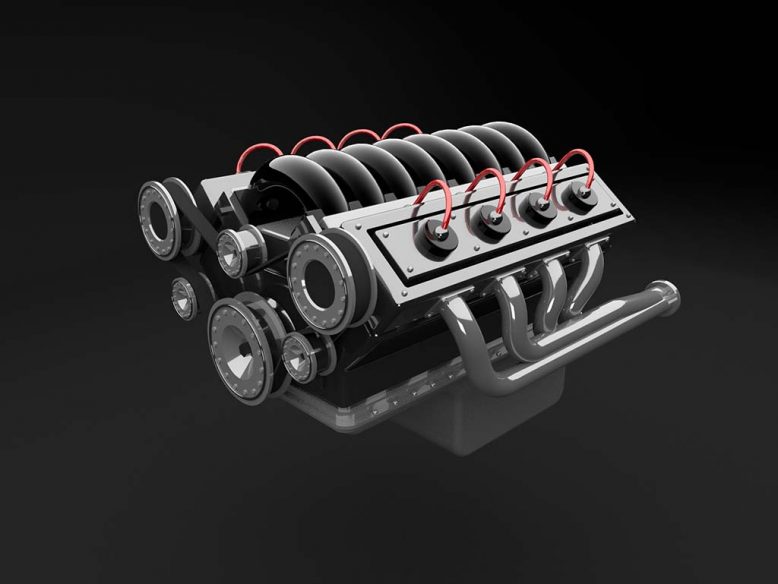
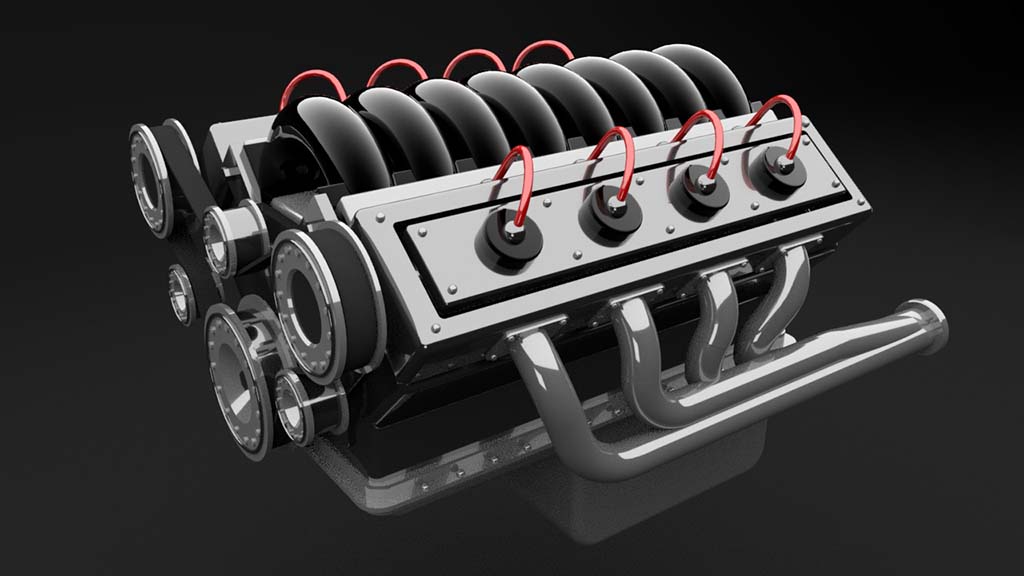
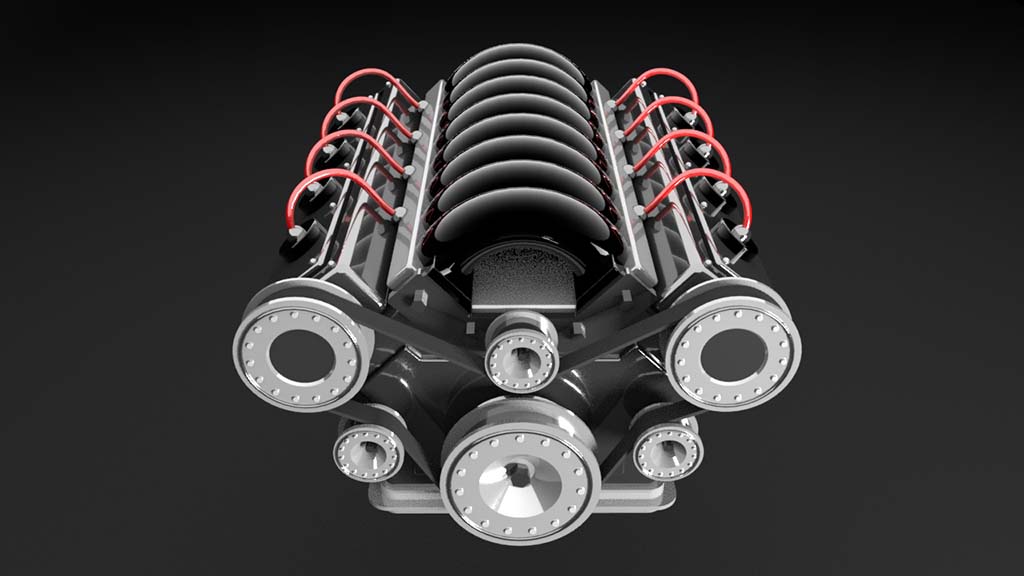
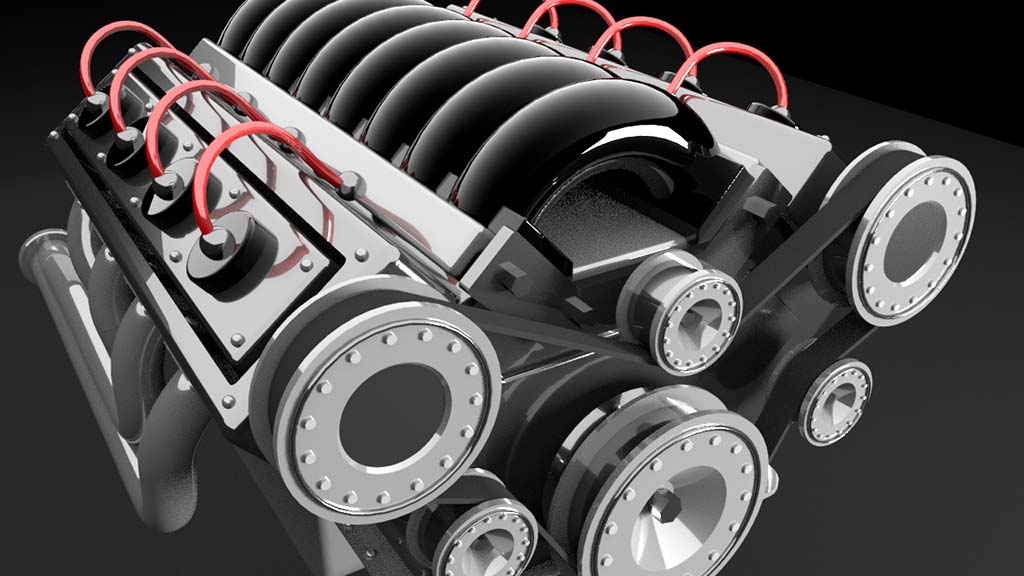
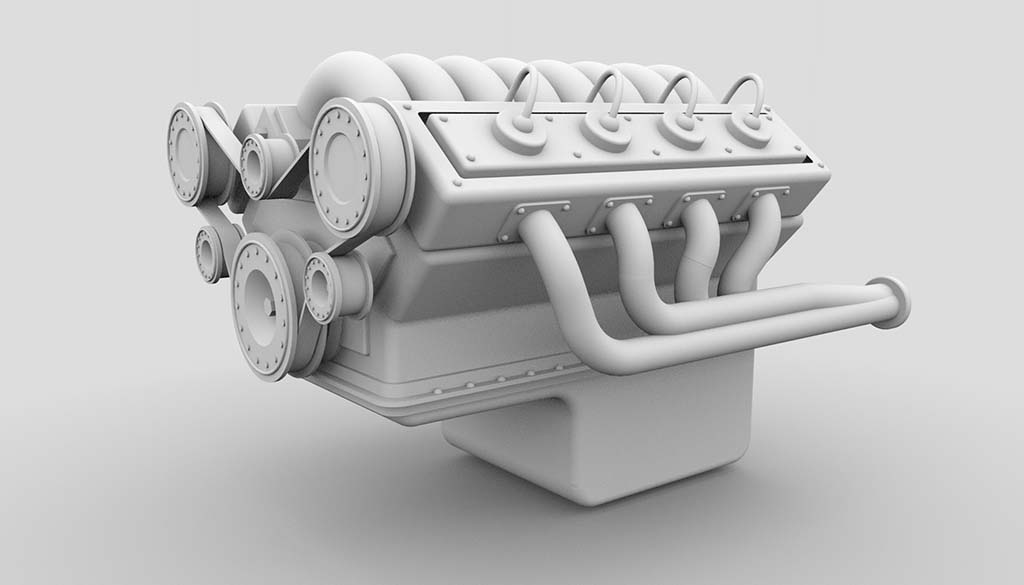
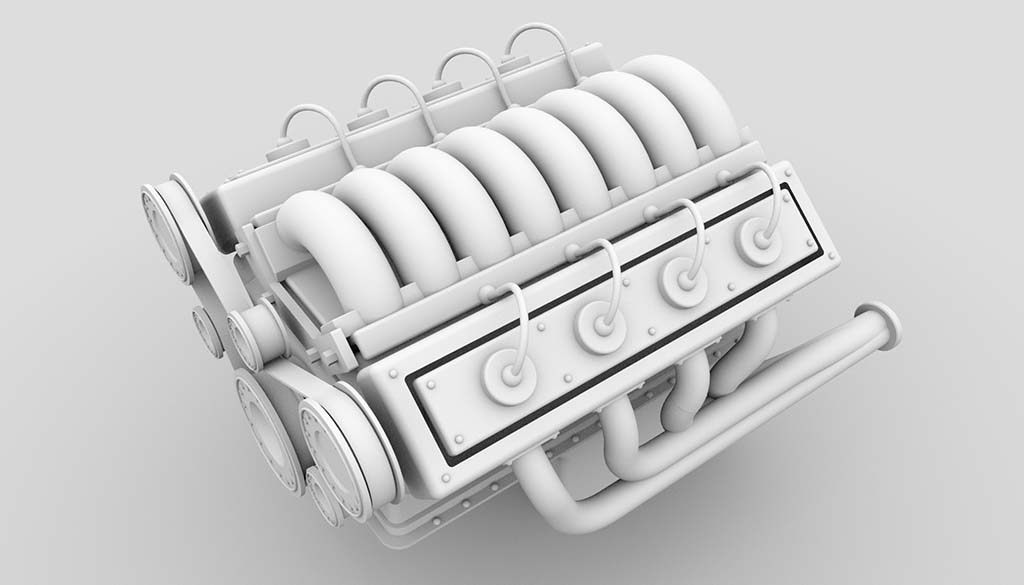
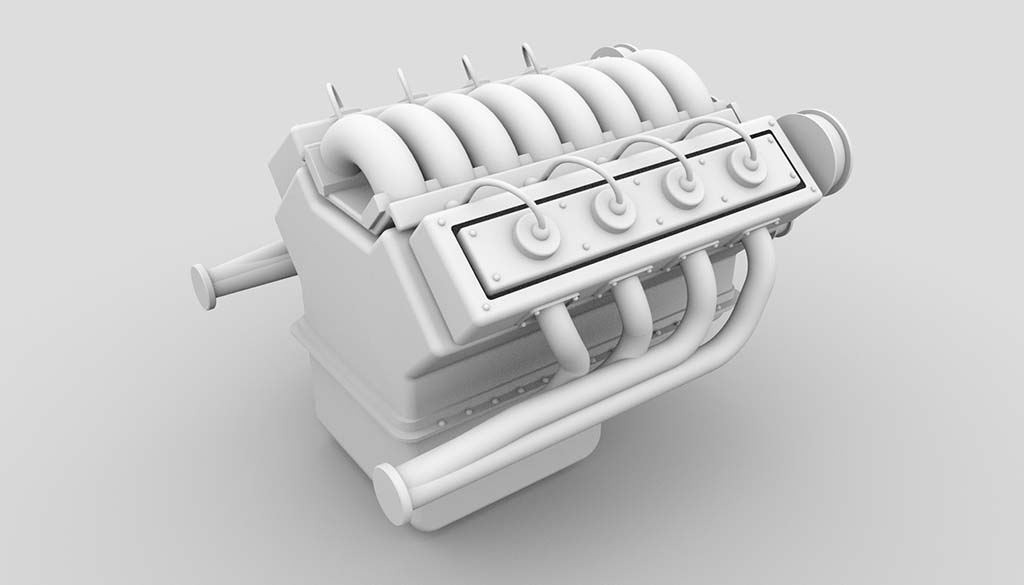
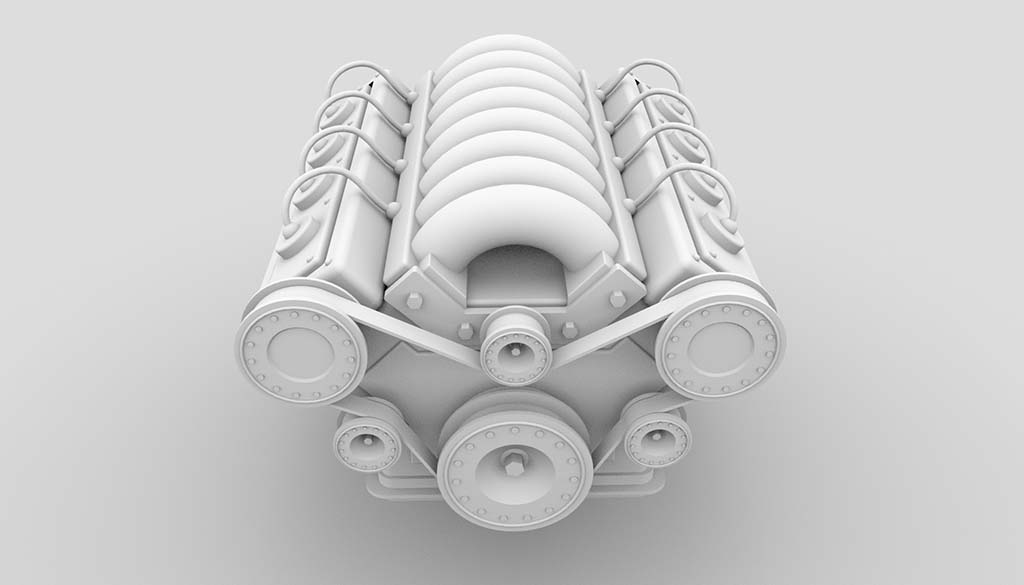
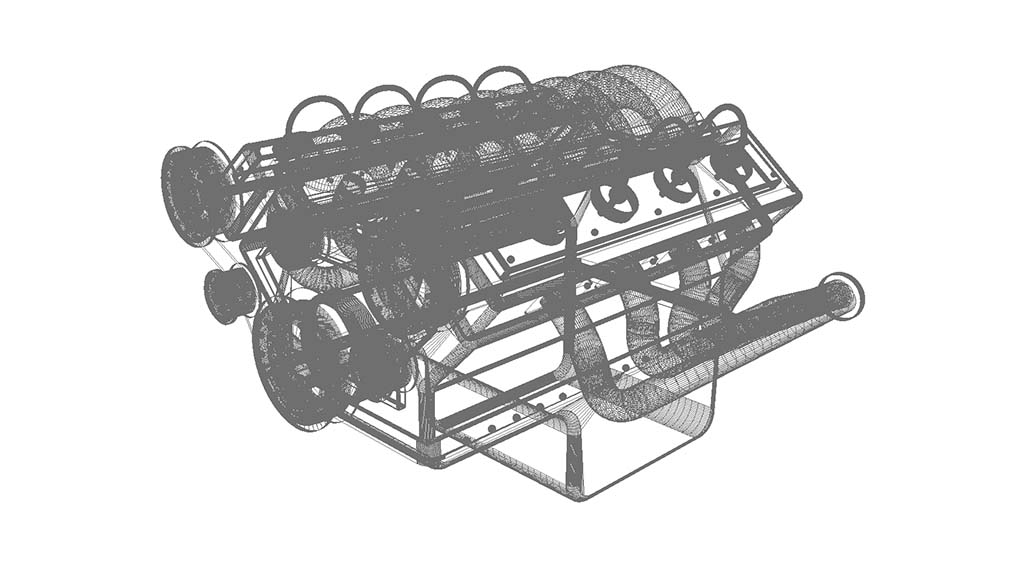

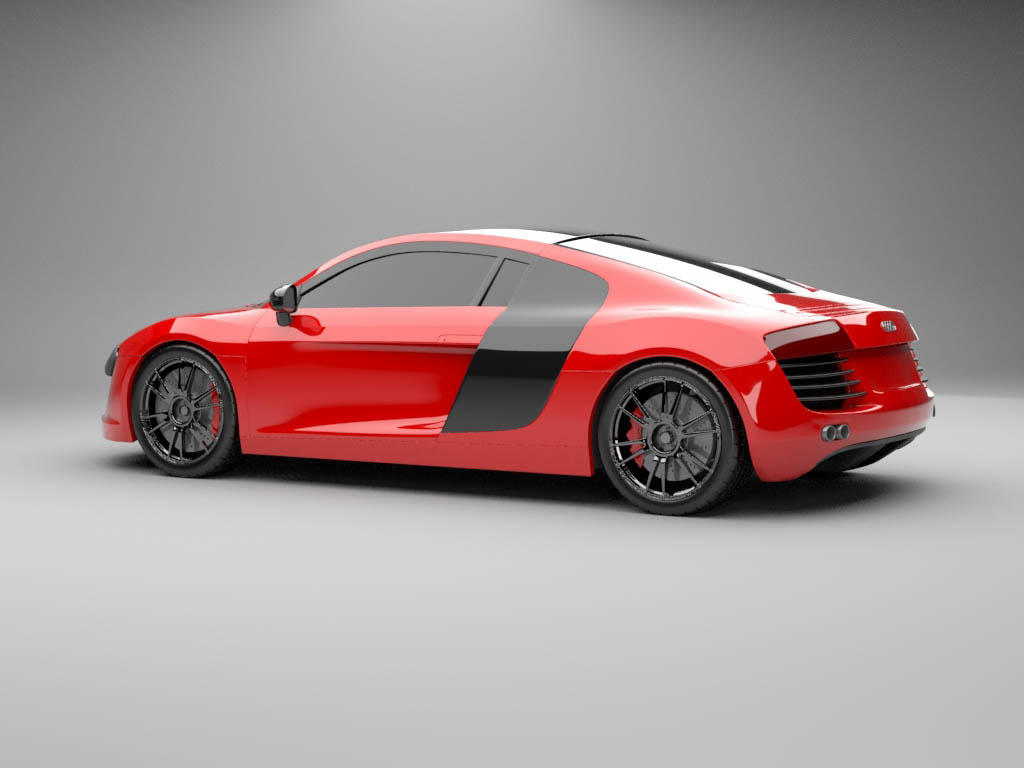

No Responses Yet